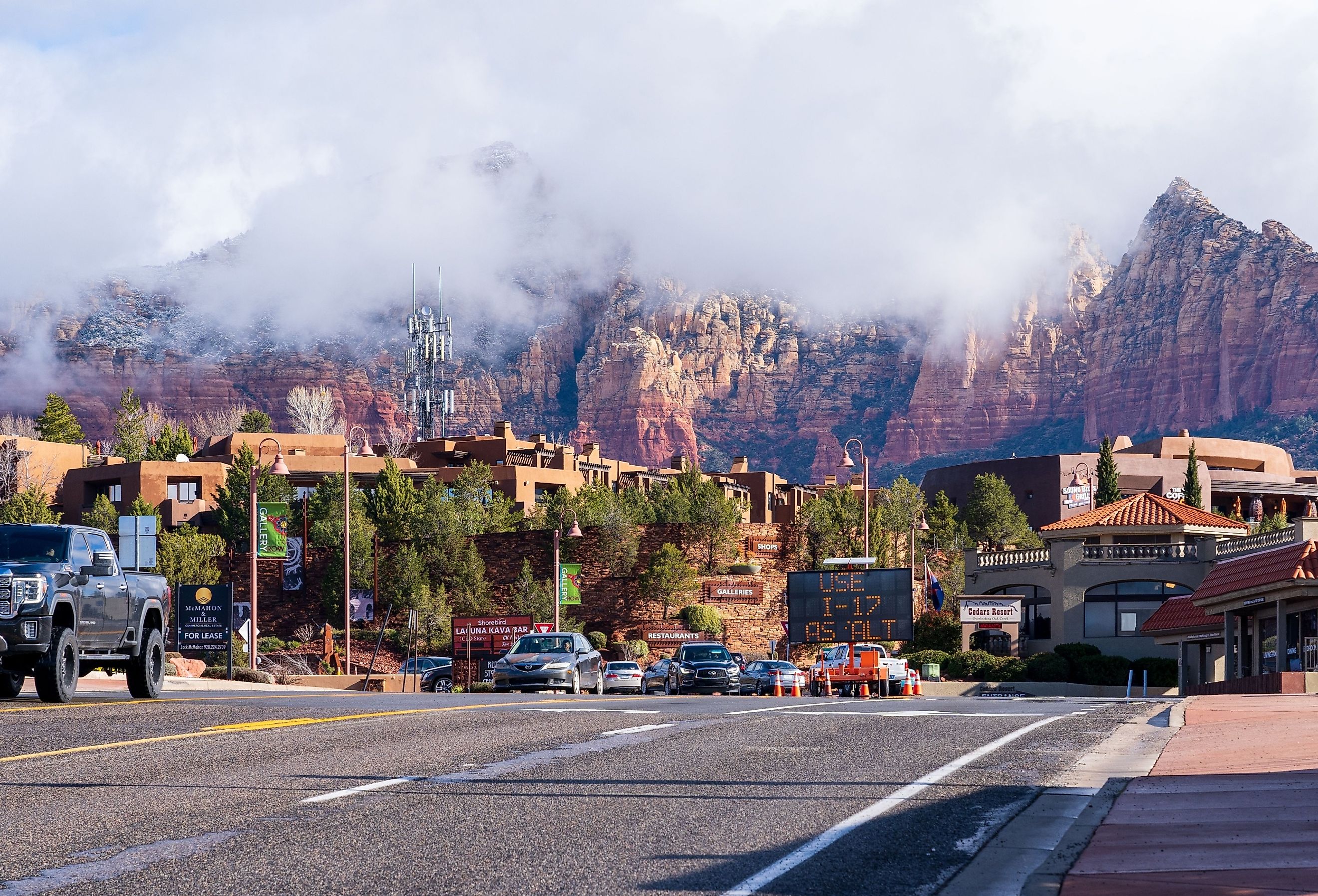
7 Most Idyllic Small Towns in Arizona
Arizona is home to the Grand Canyon, one of the Seven Natural Wonders of the World, attracting millions of visitors each year with its views. The state's diverse ecosystem ranges from the desert conditions of the Sonoran Desert to the pine-covered mountain ranges in the northern part of the state. The state's climate varies significantly from one region to another, with scorching summers in the lowlands and cooler temperatures in the highlands. Phoenix, the state capital, is known for its year-round sun and warm temperatures. Apart from its natural beauty and climate, Arizona is also home to idyllic small towns, contrasting with bustling city life, making for lovely, peaceful destinations to visit.
Bisbee
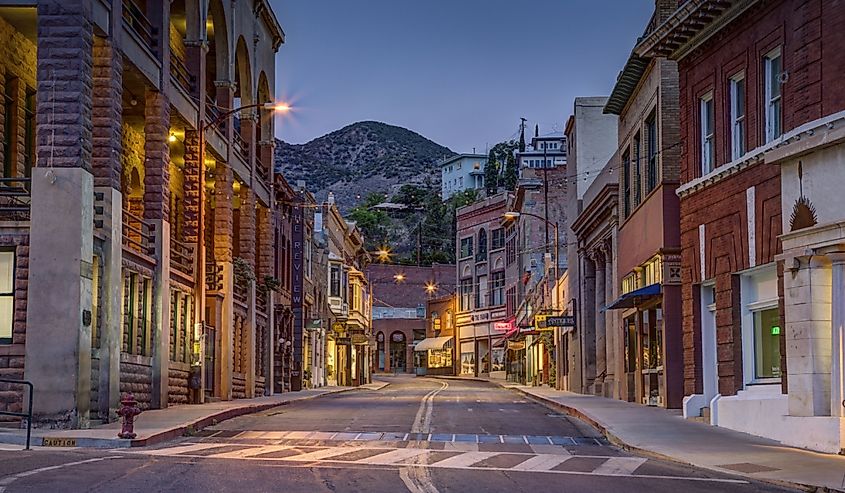
Bisbee, Arizona, is nestled in the Mule Mountains of southeastern Arizona and dates back to its founding in 1880. Originally established as a mining camp following the discovery of abundant copper deposits, Bisbee quickly grew into one of the Southwest's largest and most culturally diverse cities during the early 20th century. Its geographical setting, with steep canyon walls and historic architecture climbing the hillsides, gives Bisbee a distinct appearance unlike any other town.
For those visiting Bisbee, delving into its mining heritage is a must. The Copper Queen Mine, one of Bisbee's most famous mines, has underground mine tours led by retired miners who provide firsthand information on mining life and techniques. Visitors don a hard hat, lantern, and yellow slicker to journey into the mine's depths. Just outside the downtown area, the Lavender Pit is a stark contrast to the underground tunnels—a massive open-pit mine that speaks to the scale of copper mining operations in Bisbee. The Bisbee Mining & Historical Museum, a Smithsonian Affiliate, further explores the town's mining legacy through exhibits on geology and mining technology.
Prescott

Prescott is in the Bradshaw Mountains of central Arizona. Founded in 1864, it was the Territorial Capital of Arizona. The town's historical significance is preserved in its Victorian architecture, historic Whiskey Row, and numerous landmarks that reflect its frontier past. Prescott has a mild climate, and its landscapes are wide-ranging, from dense ponderosa pine forests to rugged mountain terrain.
The Sharlot Hall Museum in Prescott is a must-visit for history enthusiasts, educating visitors on Arizona's territorial history through well-preserved buildings, exhibits, and gardens. Meanwhile, Watson Lake, with its granite boulders and blue waters, provides a picturesque setting for kayaking, hiking, and bird-watching. The Prescott National Forest, encompassing over 1.25 million acres of varied landscapes, offers opportunities for outdoor activities, including hiking, camping, and mountain biking, across its vast network of trails.
Sedona

Sedona, Arizona, is often described as a "geological wonderland." Sitting at the southern end of the Oak Creek Canyon, Sedona's landscape has been shaped over millions of years, with its towering red rocks and jagged canyons creating a backdrop that changes color with the sun's movements. The area has been inhabited for thousands of years, first by Paleo-Indians and later by the Sinagua, Yavapai, and Apache tribes, each leaving their mark on the land through petroglyphs and settlements.
For those exploring Sedona, the Red Rock Scenic Byway (SR 179) is a route best known for its views of the red rock formations, with numerous pullouts and trailheads along the way for photography, hiking, or simply soaking in the vistas. The Chapel of the Holy Cross, a striking architectural masterpiece built into the red rocks, is a place of peace and reflection. Slide Rock State Park is another popular destination, where natural water slides formed by Oak Creek are a refreshing and exhilarating escape from the heat, set against canyon walls.
Winslow
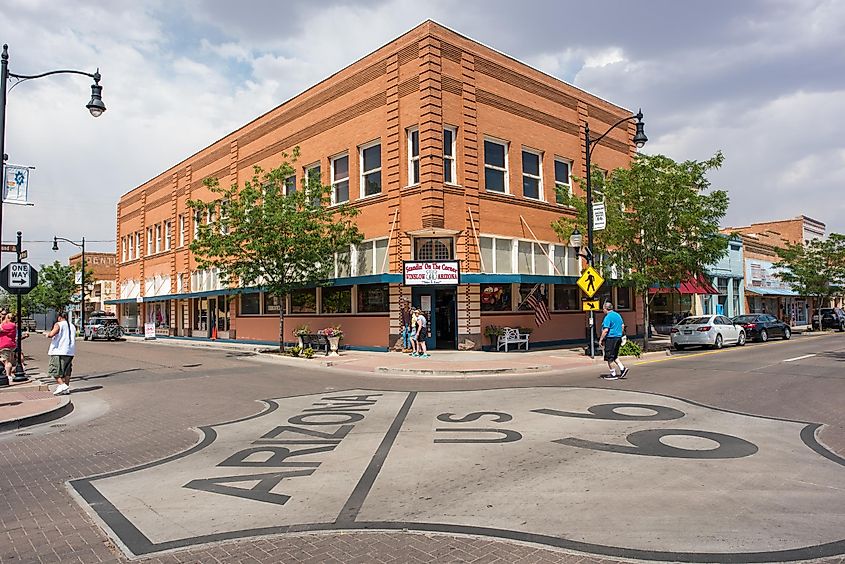
Winslow, Arizona, is a historic town on the western edge of the Little Colorado River Plateau in Navajo County, embraced by the expanses of the high desert. Established in 1882 as a railroad town on the Santa Fe Railway, Winslow became an important stopover for travelers and a bustling community in the American Southwest. Its prominence grew with the advent of Route 66, dubbed the "Mother Road," which brought the town a surge of American road culture and tourism.
Visitors to Winslow have the opportunity to explore the Meteor Crater Natural Landmark, located just west of the town. The crater, created by a meteor impact over 50,000 years ago, is one of the best-preserved impact sites in the world. The Old Trails Museum is a deep dive into the local history, with exhibits on the town's evolution from its early days as a railroad town through its Route 66 heyday. For those seeking natural beauty, the Little Painted Desert County Park has stunning views of vibrantly colored badlands, ideal for photography, hiking, and picnicking.
Tombstone
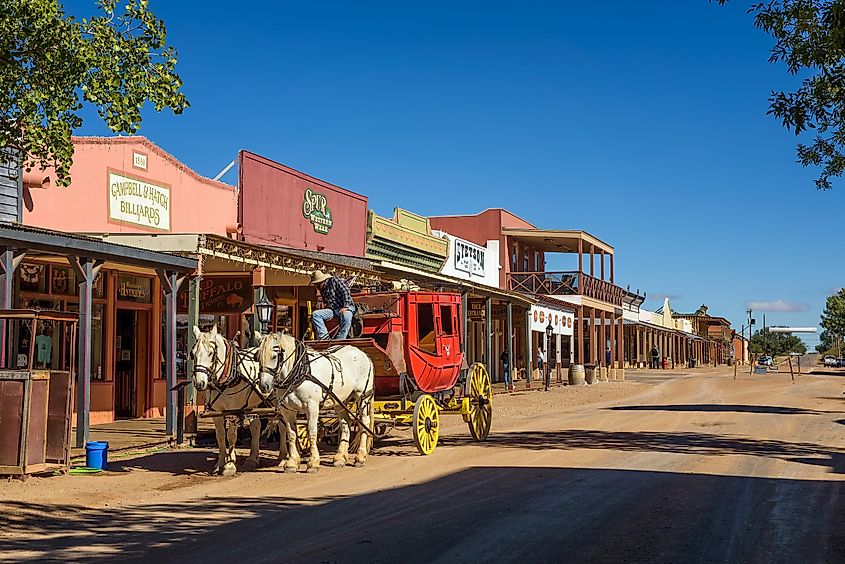
Tombstone, famously called "The Town Too Tough To Die," holds a status in American Western history. Founded in 1879 as a silver mining boomtown, Tombstone quickly became one of the last frontier towns, epitomizing the wild, lawless character of the Old West. Its location in southeastern Arizona, amidst desert landscapes, contributed to its isolation and the lawless reputation that attracted miners, entrepreneurs, and outlaws alike.
The O.K. Corral, the site of the infamous 1881 gunfight involving Wyatt Earp, Doc Holliday, and the Clanton-McLaury gang, remains one of Tombstone's most visited landmarks. Daily reenactments of the gunfight and historical exhibits let visitors step back in time and witness one of the most famous moments in Western lore. Boothill Graveyard is where many of Tombstone's early residents are buried, including those who fell in the O.K. Corral gunfight; grave markers tell tales of untimely demises and frontier justice. The Bird Cage Theatre, once a theater, saloon, gambling hall, and brothel, now allows those who enter to embark on a self-guided ghost tour.
Patagonia
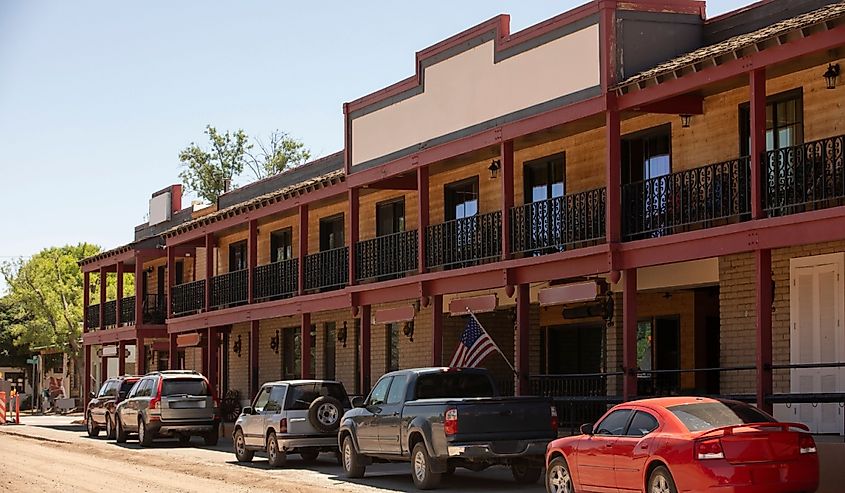
Patagonia, Arizona, is a small town in the Sky Islands region of Southern Arizona, known for its biodiversity and blend of ecosystems. The town's history dates back to the 19th century, when it was primarily a mining and ranching community, taking advantage of the area's natural resources. Over time, as mining activities declined, Patagonia became a haven for artists, birdwatchers, and nature lovers, drawn by its landscapes, mild climate, and microclimate flora and fauna.
The Patagonia-Sonoita Creek Preserve is recognized as one of the best birding destinations in the United States. Its miles of trails along Sonoita Creek wind through cottonwood-willow forests home to over 300 bird species, including the rare Gray Hawk and Violet-crowned Hummingbird. The Arizona Trail spans the state from Mexico to Utah and passes near Patagonia. It is great for hikers, cyclists, and equestrians. The Patagonia Museum, housed in the historic 1914 Patagonia High School building, chronicles the town's history from its Native American beginnings to mining and ranching.
Jerome
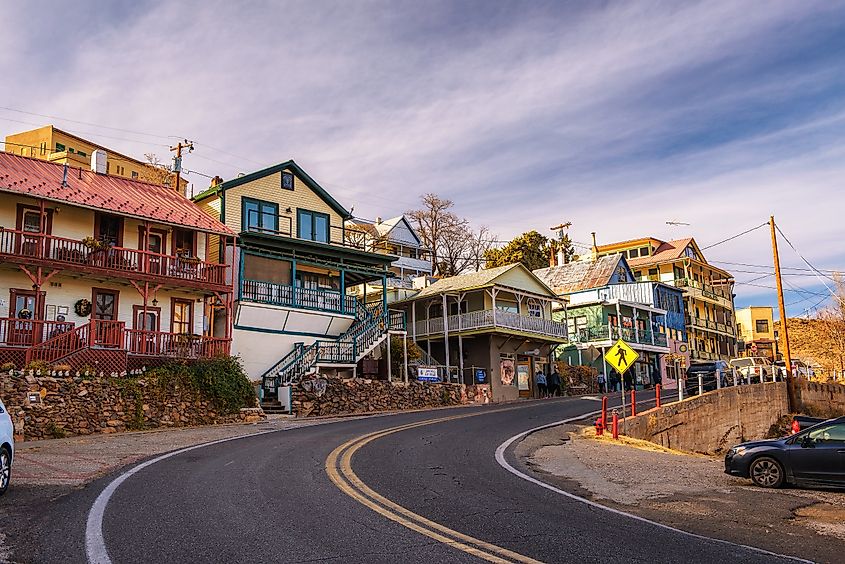
Jerome, Arizona, perched high on Cleopatra Hill above the Verde Valley, is a town with a story that mirrors the boom and bust cycle of the American West. Founded in 1876, Jerome was once a bustling copper mining town known as the "Wickedest Town in the West" for its numerous saloons, gambling dens, and lawless reputation. At its peak in the early 20th century, Jerome was home to over 10,000 residents, driven by the demand for copper during World War I. However, the town's fortune declined as the mines were depleted. By the late 1950s, Jerome was virtually a ghost town. Today, Jerome has reinvented itself as an artist community.
Jerome State Historic Park, centered around the Douglas Mansion, shares the life of mining magnates and the town's heyday with exhibits on mining technology, geology, and the daily life of miners. The Sliding Jail is a testament to Jerome's mining-induced geological instability; originally built in the town center, it slid more than 2,250 feet from its original location due to the shifting ground, now resting as a quirky historical landmark. The Gold King Mine and Ghost Town, located just outside Jerome, is an open-air museum. Visitors can explore the mine's entrance and see vintage vehicles and machinery.
Arizona's idyllic small towns have distinctive stories to tell and picturesque architecture and landscapes that leave an imprint on visitors. Towns like Bisbee, with its mining heritage, and Prescott, known for its Victorian architecture, highlight Arizona's cultural and historical diversity. Sedona's red rocks are a natural wonder that complements the outdoor adventure of the area. Meanwhile, Jerome and Tombstone bring alive the wild, lawless character of the Old West, each with its stories of boom and decline. These idyllic towns, among others, serve as reminders of Arizona's past and present, encouraging visitors to explore the beauty and history embedded within the state's smaller communities.











